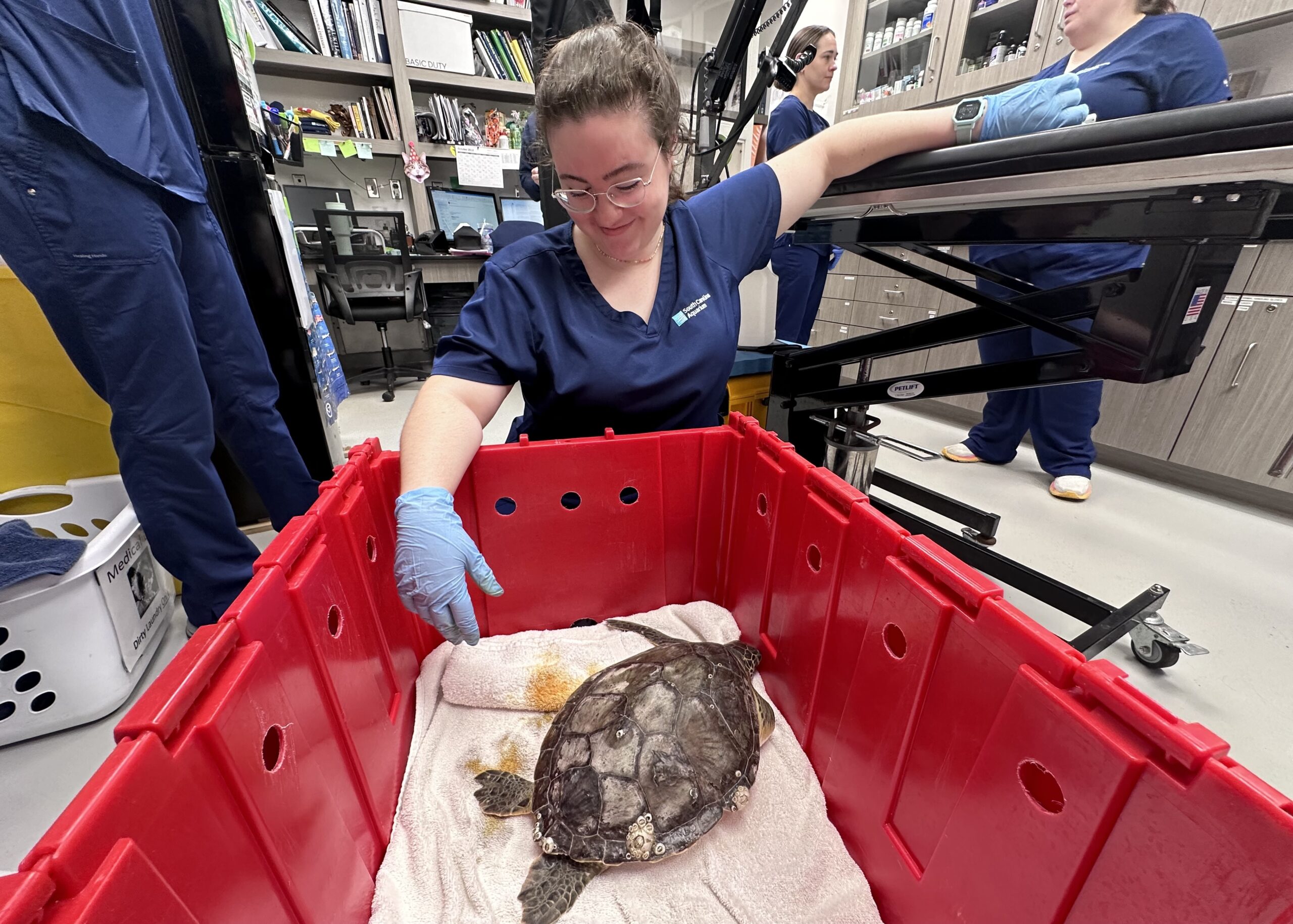I’m Grace Buschiazzo, a sea turtle biologist here at the South Carolina Aquarium. My admiration for sea turtles began at 15 years old when I took a trip to Panama and Costa Rica to volunteer with leatherback sea turtle nesting projects. I will never forget how adorable those hatchlings were — their flippers looked too long for their bodies! That trip ignited my passion for marine biology and eventually led me to the Aquarium to join their efforts of sea turtle rescue, rehabilitation and release.
During my time in the South Carolina Aquarium Sea Turtle Care Center™, I have had the opportunity to care for many sea turtle patients — including a special little green sea turtle named Ricotta. This patient was accidentally caught by a fisherman in Myrtle Beach, South Carolina and had old monofilament entangled around his/her body. Unfortunately, Ricotta’s story is not unique. Since we began treating sea turtles in 2000, we’ve seen many patients who have been impacted by entanglement.
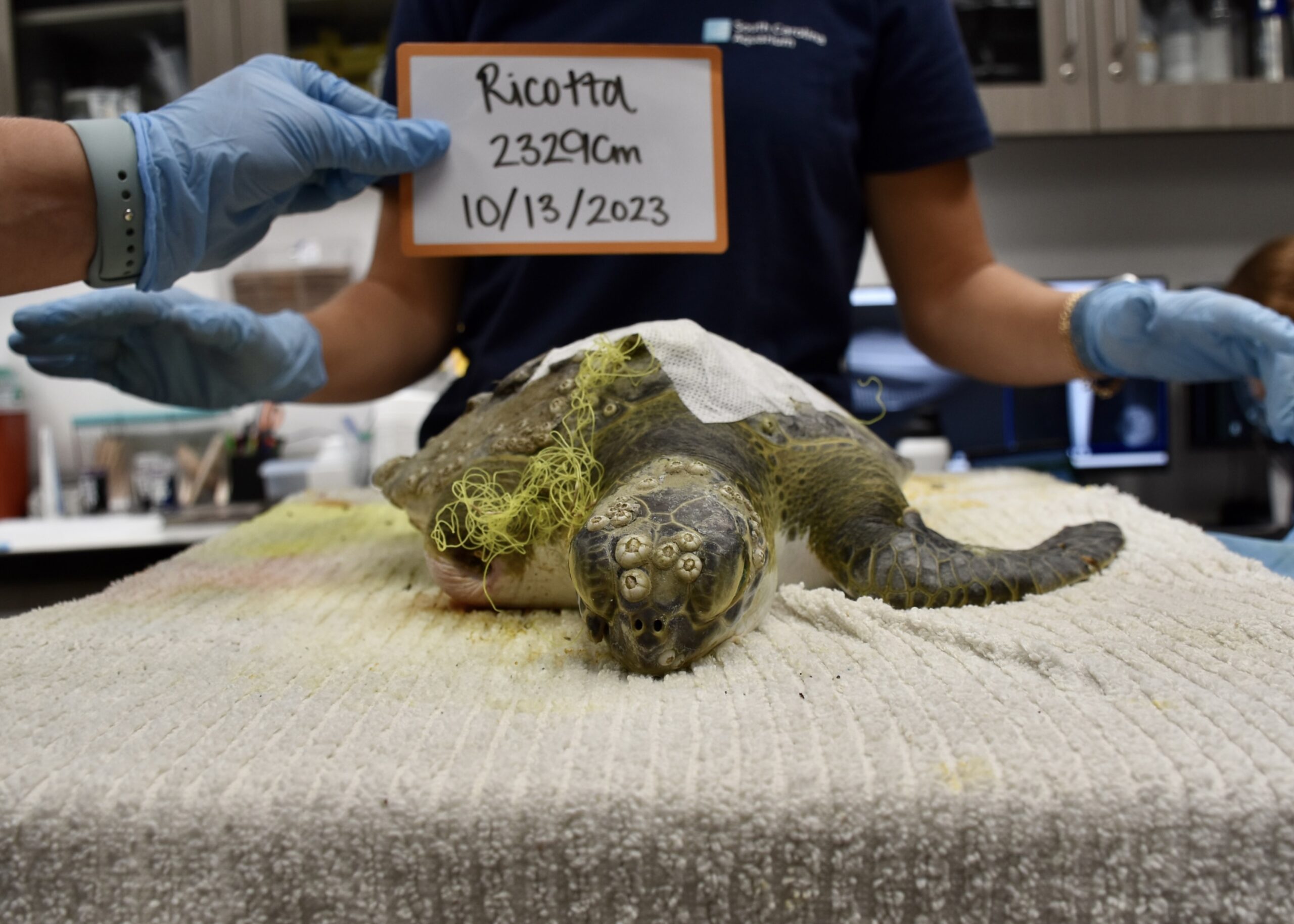
Will you help us care for sick and injured sea turtles like Ricotta who face injuries from entanglement and more?
It was obvious Ricotta had been entangled in the fishing line for a while. The line was encircling his/her neck, and its constriction had most likely caused the right front flipper amputation from loss of blood flow. As if that weren’t traumatic enough, the line was also leading from Ricotta’s neck into the mouth and throat. This line had been there for so long that it channeled into Ricotta’s beak as well, leaving a large notch. We took radiographs to determine how much line Ricotta had swallowed, and to determine if there was a hook embedded.
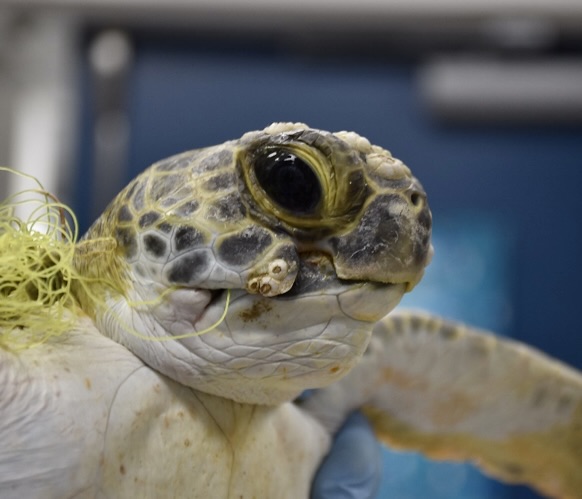
What we found next surprised us all — though there was no hook, the line had unfortunately traveled all the way down the esophagus and into the lower gastrointestinal (GI) tract. Ricotta had likely swallowed the line while biting at it in an attempt to free his/her entangled right front flipper.
To safely remove the line and to prevent further damage to Ricotta’s GI tract, we performed two types of surgeries. The first surgery removed a segment of the line via the esophagus, and the second removed the rest via the inguinal region (near the hip of the back flipper). Two surgeries later, Ricotta was finally free of the line and on the road to recovery!
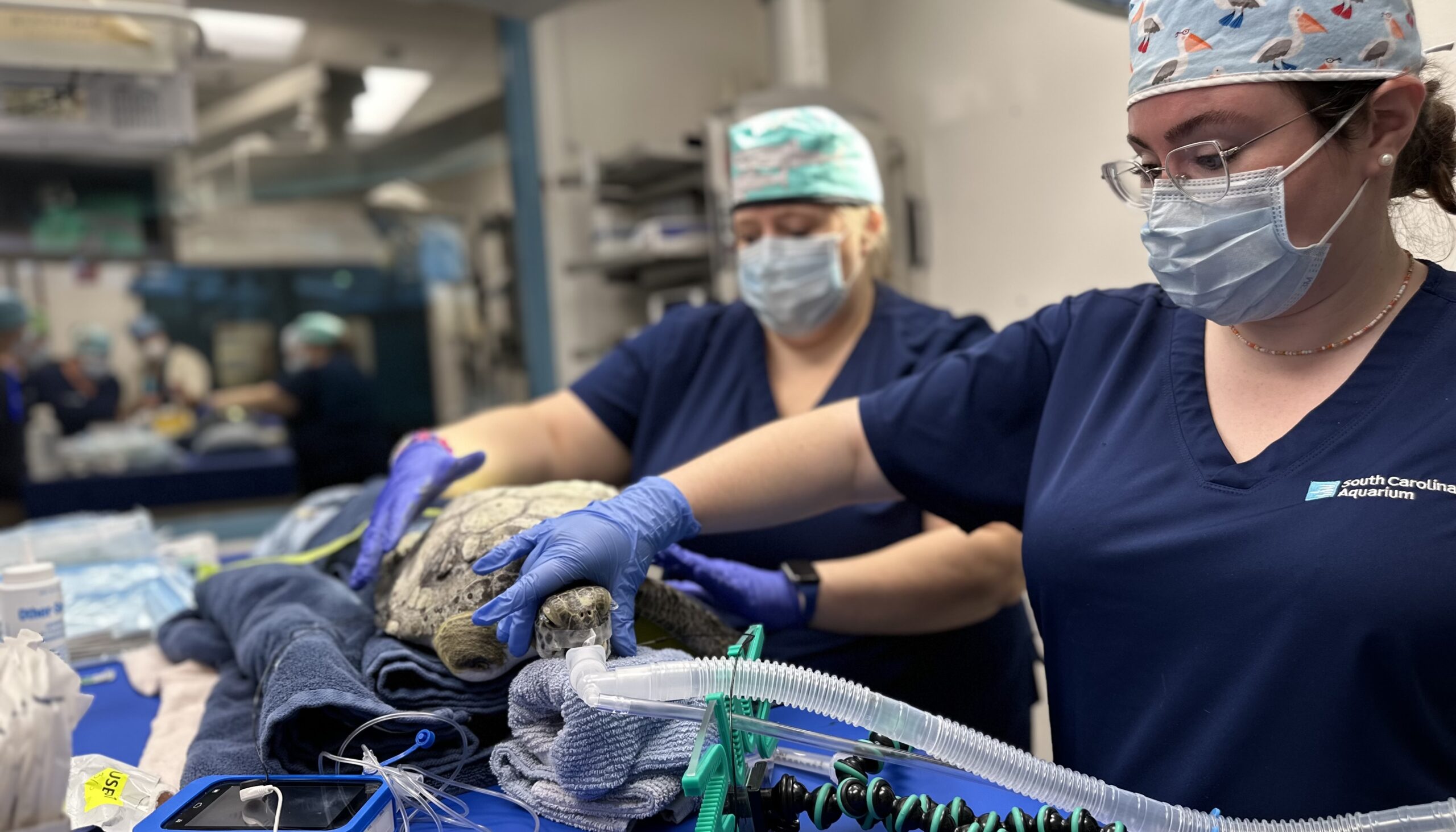
Witnessing vibrant lime green fishing line being slowly and precisely removed from Ricotta’s body was a visual I will never forget. This scene really made each of us pause and think about the hardships Ricotta had already faced just trying to survive.
Will you help us continue to perform lifesaving surgeries on sea turtles like Ricotta?
Ricotta’s story even touched renowned oceanographer and explorer Dr. Sylvia Earle, who visited the Aquarium in late 2023. Meeting Dr. Earle was an absolute honor, and being able to share Ricotta’s story with someone who so passionately advocates for ocean conservation was a highlight of my career. Providing excellent medical care to our sea turtle patients also allows us to play a role in protecting threatened and endangered species. Through our efforts, we hope to inspire the next generation of conservationists to protect these charismatic animals and the places they call home.
Since admit, Ricotta has proven to be quite the resilient little sea turtle and has impressed us with his/her continuing progress. Currently, Ricotta is in the final leg of his/her rehabilitation journey and has been moved to a deeper tank to exercise for the long swim that awaits.
We hope Ricotta will soon join the 408 turtles released by the South Carolina Aquarium — a true testament to our dedication to saving sea turtles.
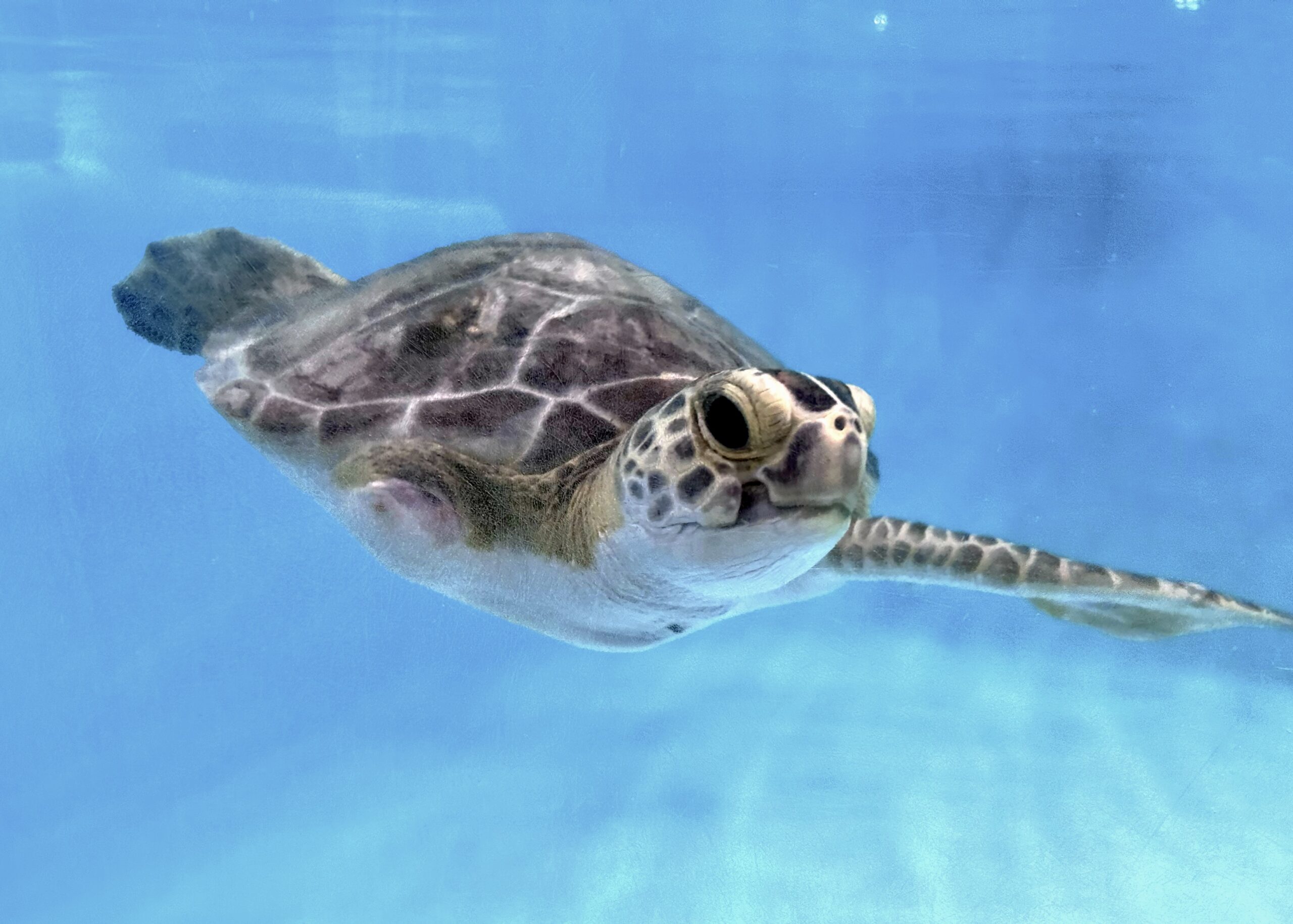
Will you help us save more sea turtles like Ricotta?
Your donation will be applied to ongoing hospital operations and will allow us to continue offering the best care for sea turtle patients who need our support. Ricotta’s story is just one of many… and you have the opportunity to be a part of their journey home.
Published April 8, 2024


